Are you ready for the best Japanese Pancakes? Light, airy and SO fluffy, these yummy hot cakes ホットケーキ are ready in 15 minutes from start to finish!
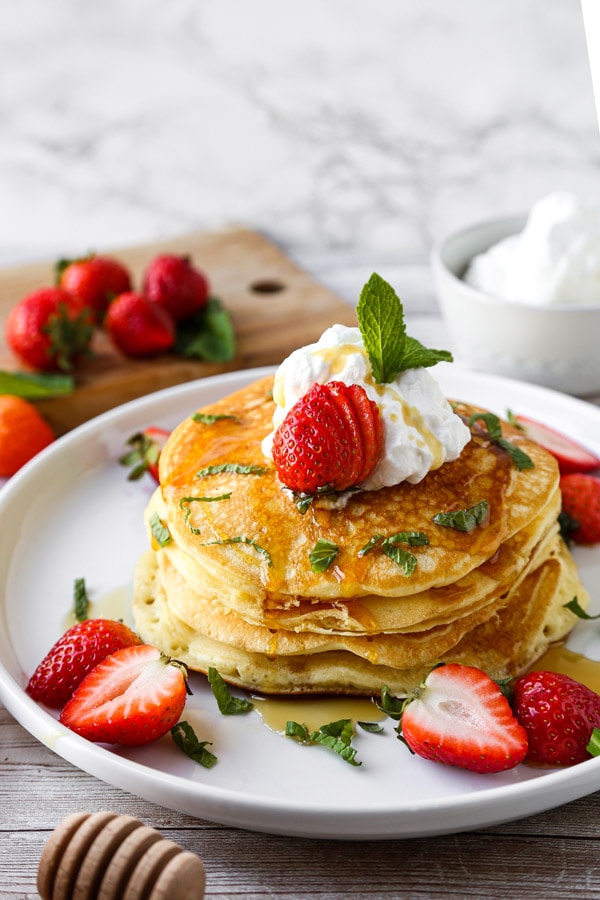
My mom makes the best breakfasts. Early mornings are a blast during our visits!
And while she may be inclined to keep it easy and serve natto over steamed rice, if she asks me what I want, 9 out of 10 times I’m going to say PANCAKES PLEASE!
There’s just something about Japanese pancakes I’m powerless to. They’re so fluffy, airy and sweet that digging into a short stack feels like a minor bit of decadence.
Well, I’ve got an easy pancake recipe for you today, friends. One that requires minimal ingredients – but yields some of the most light, airy hotcakes ever!
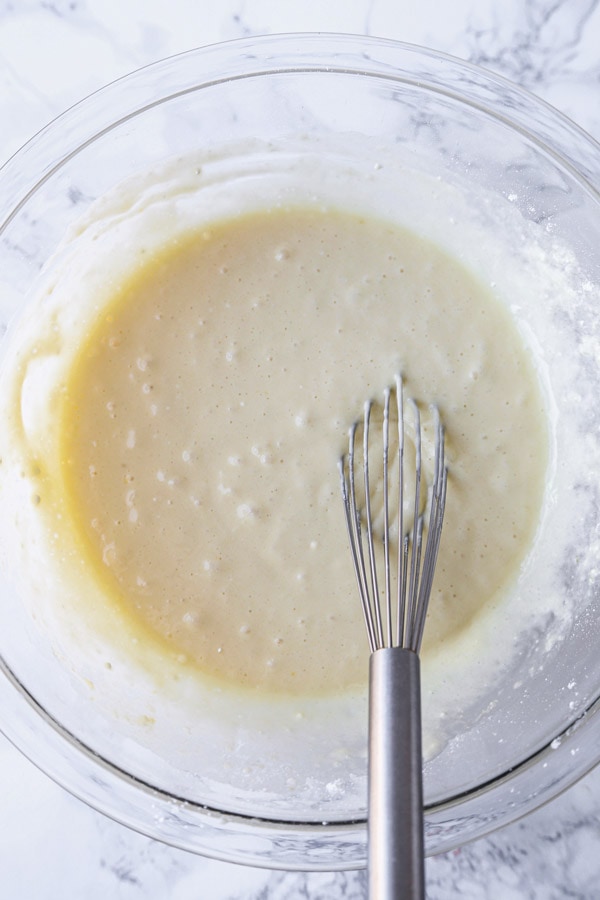
What are Japanese pancakes?
Japanese pancakes, also called hot cakes (ホットケーキ), are famous for their fluffy and jiggly texture. The secret ingredient in Japanese pancake batter is the use of cake flour as opposed to all-purpose flour. It results in an airy, moist, cakelike texture.
Now just to be clear, these aren’t the massive Japanese souffle pancakes that are like 2 inches thick. Those recipes in particular call for an egg-white meringue and a Japanese pancake mold to achieve the jaw droppingly tall and perfectly round pancakes. They’re impressive – but a TON of work. Not always ideal when you’re trying to get breakfast on the table before the school bus pulls up.
My fluffy pancake recipe is a simplified version you can make in a regular pan. No special equipment required. But while they may not be quite as flashy, they are just as light and tasty!
You and your family are going to love them!

Ingredients for Japanese pancake batter
- Cake Flour: When used in cakes and pancakes, cake flour produces a good rise – along with a fine crumb and tender texture. Use this instead of all-purpose flour.
- Baking Powder: This is a leavening agent that causes the pancake batter to expand, resulting in increased volume and a light, airy texture.
- Eggs: For increased structure and stability in the batter, as well as delivering added moisture, eggs are a must in this Japanese pancake recipe.
- Granulated Sugar: For a bit of sweetness, you know what to do 🙂
- Milk or Almond Milk: Use whatever dairy (or non-dairy) you prefer. I personally find the light nuttiness of almond milk to be a winner in this recipe!
- Pure Vanilla Extract: A little goes a long way towards imparting the best elements of a sweet dessert cake to these simple pancakes.
- Vegetable Oil: Any neutral cooking oil will work. You can also substitute this for a little clarified butter.
How’s that for a manageable pancake ingredients list? Aside from the cake flour, it’s all pretty common stuff when it comes to making pancakes at home. And the outcome is spectacular!
Japanese Pancake Mix
Can’t I just use a mix?
I hear ya!
Now, the recipe I have for you in the recipe card below is for making Japanese pancakes from scratch. But if you are a wee bit lazy like I am when it comes to making breakfast, you can buy pre-made Japanese pancake mix. It’s amazing!
The most famous brand is Morinaga’s Hotcake Mix. Grab it at an Asian grocery store, or pick it up on Amazon.
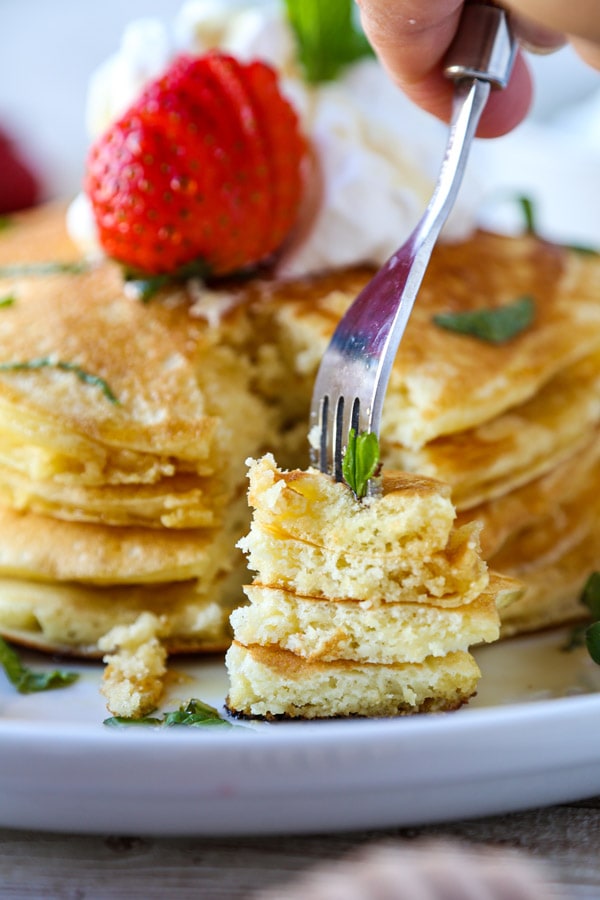
How to make japanese pancakes from scratch
- In a large bowl, mix your cake flour and baking powder.
- Then in a separate bowl, beat the eggs using a whisk and slowly add the sugar. Whisk in milk, vanilla extract, and oil.
- Make a small well in the center of the flour mix and slowly pour the egg mixture while whisking. Mix well until batter is smooth.
- On your stovetop, turn heat to medium-low and coat a medium size pan (one you have a lid for) with cooking spray.
- Ladle a quarter of the batter into the pan and cover with a lid. Cook for about 2 minutes, or until you see bubbles form at the top of the pancake.
- Flip the pancake while the top is still wet (don’t wait until it’s fully cooked otherwise it won’t be as fluffy!) and cook for an additional 2 minutes or until the bottom is golden brown.
- Transfer to a plate and repeat the same steps until you have used all the batter.
- Serve your Japanese pancakes with toppings of your choice.
Toppings for your fluffy japanese pancakes
These fluffy, homemade pancakes are made all the better by the toppings you toss on.
Now, you can always go the butter and pure maple syrup route. That delicious duo is a classic combination for a reason!
I personally like fresh berries for color and a pop of fruity freshness. And what goes better with berries than whipped cream or custard!?
But I’d say my favorite addition to this Japanese pancakes is a scattering of fresh herbs like mint or basil. Too much and it can overwhelm the soft sweetness of the pancakes, syrup and fruit. But just a touch of green herbs sends the whole package into warp-speed-deliciousness!
What’s your favorite pancake topping? Sound off! I’d love to hear about your favorites in the comments section 🙂

What to serve with Japanese pancakes
These Japanese fluffy pancakes are great at Sunday brunch – but are easy enough to pull off as an everyday breakfast recipe.
However, one of my favorite things to do (especially around the holidays) is to make a meal out of desserts. If you plan on doing a multi-course dessert tasting menu at your place, you could load these pancakes up with whipped cream and serve them alongside this Japanese style pumpkin pudding (purin – プリン), this cakey dorayaki (どら焼き) – and maybe top it all off with a few scoops of this matcha ice cream (抹茶アイスクリーム).
It’s fun to indulge from time to time, right!?
Or, if you’re looking to whip up a full-on brunch at your place, check out these sweet, savory and easy recipes:
- Tamagoyaki (Japanese Omelette)
- Basic Congee 粥
- Omurice オムライス
- Hawaiian Butter Mochi
- Peanut Butter Banana Smoothie
Plus:
Did you like this Japanese Pancakes Recipe? Are there changes you made that you would like to share? Share your tips and recommendations in the comments section below!
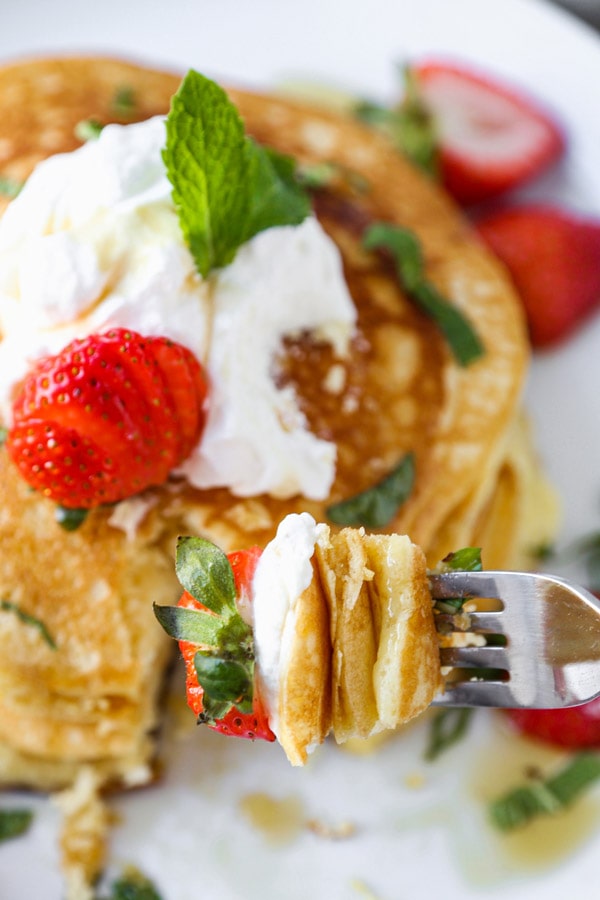
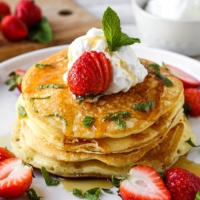
Japanese Pancakes (Hot Cakes – ホットケーキ)
- Prep Time: 5 minutes
- Cook Time: 10 minutes
- Total Time: 15 minutes
- Yield: 4 pancakes 1x
- Category: Desserts
- Method: Pan frying
- Cuisine: Japanese
Description
The best light and fluffy Japanese pancakes! So easy to make from scratch!
Ingredients
- 1 2/3 cup cake flour
- 1 1/2 teaspoon baking powder
- 2 large eggs
- 1/4 cup granulated sugar
- 3/4 cup milk or almond milk
- 1/2 teaspoon pure vanilla extract
- 1 teaspoon vegetable oil
- Oil or cooking spray for coating the pan
Topping options:
- Fresh berries
- Fresh herbs like mint or basil
- Whipped cream
- Custard
- Pure maple syrup
Instructions
- In a large bowl, mix flour and baking powder.
- In a separate bowl, beat the eggs using a whisk and slowly add the sugar. Whisk in milk, vanilla extract, and oil.
- Make a small well in the center of the flour mix and slowly pour the egg mixture while whisking. Mix well until the batter is smooth.
- Turn the heat to medium-low and coat a medium size pan with cooking spray (that comes with a lid).
- Ladle a quarter of the batter in the pan and cover with a lid. Cook for about 2 minutes, or until you see bubbles form at the top of the pancake.
- Flip the pancake while the top is still wet – don’t wait until it’s fully cooked otherwise it won’t be as fluffy! – and cook for an additional 2 minutes or until the bottom is golden brown.
- Transfer to a plate and repeat the same steps until you have used all the batter.
- Serve with toppings of your choice.
Notes
These Japanese pancakes are best fresh out of the pan! Leftovers don’t fare well in the fridge.
Nutrition
- Serving Size:
- Calories: 300
- Sugar: 12.8 g
- Sodium: 75 mg
- Fat: 4.6 g
- Saturated Fat: 1.8 g
- Carbohydrates: 55.3 g
- Fiber: 1.5 g
- Protein: 8.9 g
- Cholesterol: 93 mg















Hi
You mentioned that there is a Japanese pancake mix available at Amazon. If I substitute the dry ingredients for the mix, do I only have to proceed with the recipe as printed?
Thank You
Question regarding Step #6
Flip the pancake while the top is still wet – don’t wait until it’s fully cooked otherwise it won’t be as fluffy! – and cook for an additional 2 minutes or until the bottom is golden brown.
Should the pan be covered during this step ?
Hi Doug! No, you don’t need to cover the pan 🙂